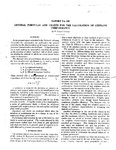Frantish
Airman 1st Class
Look in any major book on WW2 aircraft and they say "Max. Speed: xyz"
Anyone here probably knows that information is very subjective as it depends on a myriad of variables.
So what IS the usual parameters the aircraft is under when the speed is calculated?
Just to fill in the possibilities:
Aircraft (excluding loadout):
Conditions of aircraft and engines
Cleanliness
Fixed Equipment (radio antennas, hard-point mounts, exhaust suppressors)
Empty weight (includes the oil, hyd-fluid, coolant, O2, other)
Load-outs:
Fuel (how much?)
pay load (crew, munitions, mission items (maps, nav tools) )
Atmosphere:
Alt
Temp
Humidity
And did each county used different loadouts?
When it comes to bombers, is the MAX speed calculated with no bombs and half fuel?
Or is it with just 1 crewman, no bombs, and only 30 min of fuel??
Thanks
Anyone here probably knows that information is very subjective as it depends on a myriad of variables.
So what IS the usual parameters the aircraft is under when the speed is calculated?
Just to fill in the possibilities:
Aircraft (excluding loadout):
Conditions of aircraft and engines
Cleanliness
Fixed Equipment (radio antennas, hard-point mounts, exhaust suppressors)
Empty weight (includes the oil, hyd-fluid, coolant, O2, other)
Load-outs:
Fuel (how much?)
pay load (crew, munitions, mission items (maps, nav tools) )
Atmosphere:
Alt
Temp
Humidity
And did each county used different loadouts?
When it comes to bombers, is the MAX speed calculated with no bombs and half fuel?
Or is it with just 1 crewman, no bombs, and only 30 min of fuel??
Thanks

